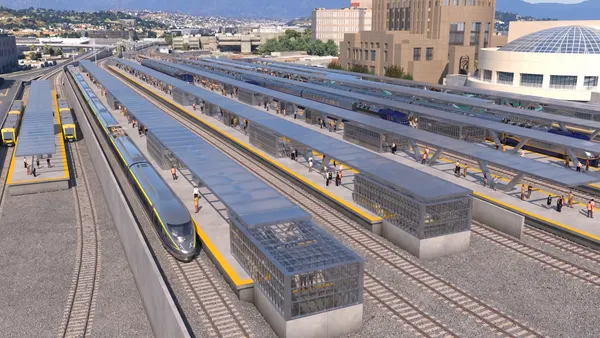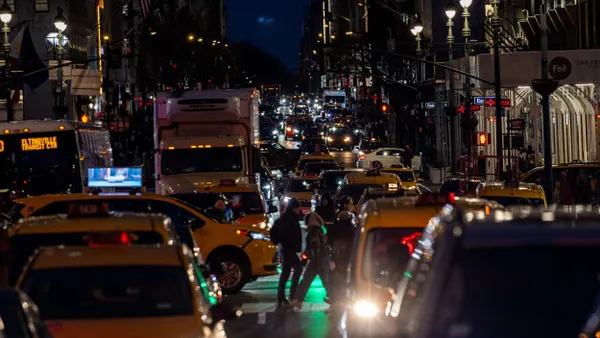Editor's Note: This piece was written by Isabella Groegor-Cechowicz, SVP, Global General Manager Public Services at SAP. The opinions represented in this piece are independent of Smart Cities Dive's views.
As cities today embark on the journey to become a smart city, the path may not always seem clear, and priorities can evolve during the sprint to innovate. One of the largest areas of consideration in developing smart cities regarding transportation is urban mobility, which is the evolving demographics, digitization, and collaborative consumption changing the ecosystem and opportunities in cities today.
In the process of managing urban mobility, governments must create a competitive edge in transportation that they can implement for their citizens and tourists alike. Governments are seeing changes in society and a shift in what citizens expect. For example, citizens are interested in connected vehicle networks, and the opportunity this presents to have connectivity between a car, a phone and maps. Additionally, the adoption of autonomous vehicles is a new, and larger, commitment than other technologies, so governmental leaders must proceed with caution, but also excitement regarding the possibilities.
On-demand connectivity for transportation
Citizens want to be connected to all of their devices at all times, whether that be through mobile, vehicles or computers across their personal and professional lives. As most citizens are always on the go, professionals in particular need to have the ability to work in any location, whether that be on public transportation, in the privacy of their own car, or at an office. Through connected devices, both citizens and professionals alike, are able to sync their data from location to location, and pick up where they left off. Connected devices such as sensors and machine data are able to increase performance, efficiency, and innovation throughout a city, making traveling easier and more engaging for both personal and professional trips.
New technologies aid governments in creating a networked economy, where they can more easily connect with citizens on particular requests for improving their lives. As communities grow and evolve, it has become a necessity — not a luxury — to connect people through devices and sensors. Additionally, these new technologies are able to collect data from machines and applications, whether that be sharing insight to the nearest gas station or knowing your fueling preference based on past transactions, to analyze connectivity in real-time.
New ways of transportation
Today, cities are seeing new trends emerge regarding the future of transportation. Currently, digitization in networks and the need to provide travel aid for more citizens are two areas of innovation that cities are researching. While each city varies in its development stage and creates its own innovation plans, being able to meet the increased traffic of its own citizens and tourists is crucial. Governments must be prepared to meet the transportation needs of those in their district, and for some in the later stages of the smart city journey, autonomous vehicles may be the best pathway.
Governments and citizens are exploring the opportunity of incorporating autonomous vehicles into their transportation methods today, and these driverless vehicles take on more forms than just personal use. Autonomous vehicles also benefit an economy’s modes of public transportation, such as taxis, buses, delivery trucks and more. For governments to maintain pace with the implementation of autonomous vehicles, they must also consider enhancing current established infrastructure, such as how streets, traffic lights, and signals can be renovated to offer more space for driverless vehicles.
As urban populations grow today, citizens are voicing the need to be constantly connected through their devices. To accommodate to urban mobility and adapt to new transportation trends, governments must begin to analyze the benefits of adapting connected vehicles and/or autonomous vehicles. In addition to meeting the needs of its own citizens, governments must analyze the needs of travelers and the benefits that new technologies can have on an economy.









